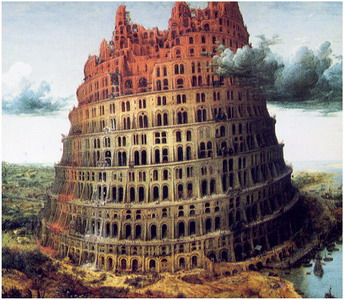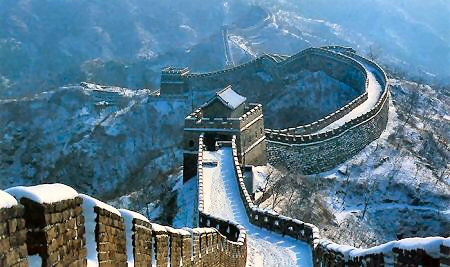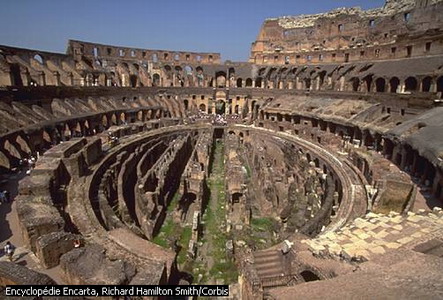The other wonders of the world
Everybody agrees to say that there are on earth seven wonders, no more and no less. As we saw, these wonders were defined by Alexander the Great according to fourteen different lists.
But why did we select only seven wonders concidering the fact that other monuments at the same period were also impressive? A piece of the answer would be that the number "7" played an exceptional role. For example, the fact that the Babylonians knew only seven planets, and as a consequence, there were seven days of the week.
The Tower of Babel
A few people speak about the existence of an eighth wonder, the tower of Babel. This monument described in the biblical texts would be at the origin of the various languages spoken on earth. In fact, the tower of Babel effectively existed in Mesopotamia in Babylon.
This tower was a Ziggurat with many floors containing, in its summit, a temple dedicated to the god of the city: Marduk. The faith of this period wanted that nobody could enter the room of Mardouk during night. Only a woman of Babylon, elected by the priests, could spend the night with the god.

The Great Wall of China
The construction of the Great Wall of China begun during the IVth century BC, when China was split in several realms which were in confrontation. The realms of the North, that had to resist to the barbaric invasions, built sections of the Great Wall using stones and dirt.
Around 220 before Christ, the emperor Quin Shin Huang of China recently unified decides to link the extremities of the fortifications to form the unique wall protecting the North of the country.
The construction continues until Ming (from 1368 to 1644), that is to say during more than 1800 years. With its 3 700 miles long and bordering the north and northwest boundaries of China, the Great Wall of China is considered as the biggest work of the military genius.
By looking closer the details of the Great Wall of China, we notice that it is in fact technically impossible to watch it from the moon as several people claim it. Indeed, the width of the wall is at most ten metres. To see it from the moon would means that we are capable of seeing the leg of an acarid 10 m (30 feet) away.

More information and pictures of the Great Wall of China on China Great Wall.
The Taj Mahal
The Taj Mahal, located at Agra in India, is considered as one of the masterpieces of the moghol art. This palace was built by the emperor Shah Jahan ( 1592-1666 ) in honor of his favourite wife named Arjumand Banu Bagam who died at 38 years old.
The construction of the Taj Mahal was fifteen years long and required 20 000 people and more than 40 000 elephants.
In 1658, Shah Jahan is discharged by his son. He is accused to have ruined the city with the construction of this mausoleum.
We can still admire the magnificence of the Taj Mahal in Agra. However the pollution caused by the industry strongly alters the brightness of the marble and could also destroy this luxurious palace.

The Colosseum of Rome
The project of the Colosseum was established by Vespasien who wanted to give back to Rome its greatness after the destructive regime of Nero. Inaugurated in the year 80, the Coliseum had a capacity of 50 000 sitting places. It measures 158 m (614 feet) length, 153 m (508 feet) wide and 50 m (164 feet) height.
In this amphitheatre, we mainly organized combats of gladiators and animals. The structure of the Colosseum also allowed to organize water joustings by inundating its low part.
The last fight of gladiators took place at the beginning of fifth century. Since this period, this monument has endured numerous earthquakes and plunders imposing irreversible damages. Several stones were even used for the construction of the Basilica of Saint Peter.


